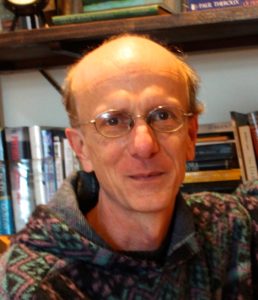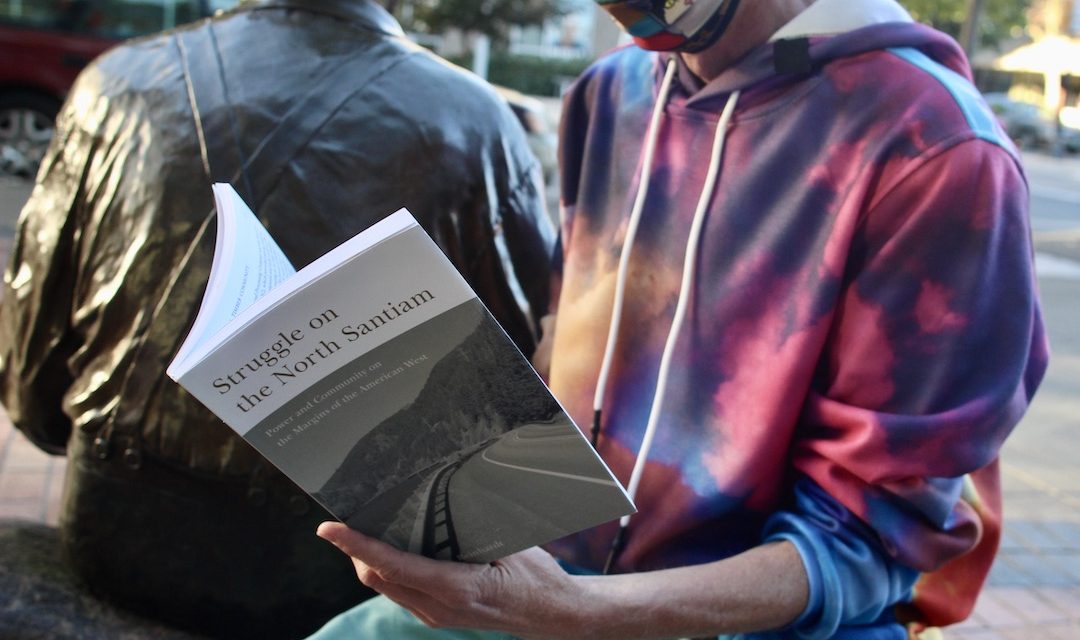Title: Struggle on the North Santiam: Power and Community on the Margins of the American West
Author: Bob H. Reinhardt
Publisher: Oregon State University Press, Corvallis, Oregon (2020)
Available locally: Black Sun Books, 2467 Hilyard St. (541-484-3777) and J. Michaels Books, 160 E. Broadway (541-342-2002).
By Daniel Buckwalter
It is, like all rural areas of the American West, a splendid physical sight, both for its natural and manufactured beauty.
The 51-mile stretch of Oregon Highway 22 that cuts through the North Santiam Canyon on the west side of the Cascade Mountain Range offers beautiful Douglas firs on the banks of the North Santiam River. The tallest points of Mt. Jefferson to the east are visible on a clear day, and the Detroit and Big Cliff dams also are a presence.
Bob Reinhardt writes that “Intrepid and interested travelers might even stop for a while to visit the Canyon Life Museum in Mill City, where a floor studded with holes from loggers’ boots supports exhibits on farming, mining and more. In short, there is history in the North Santiam Canyon, as in other places in the West.”

Daniel Buckwalter; photo by Randi Bjornstad
That history, like the history of many small communities in the American West, has its push and pull elements that, as Reinhardt explains, pit “a victimized ‘us’ (local residents) versus a powerful ‘them’ (outsiders, city folk, ‘the government’).”
And this history is explored in vivid detail in Struggle on the North Santiam: Power and Community on the Margins of the American West. Reinhardt, a history professor at Boise State University, spent almost 15 years researching and writing about the area, which began as a master’s thesis while he was a graduate student at the University of Oregon.
The North Santiam’s tug-of-war history for resident autonomy against outsiders — real or perceived — in many respects is the history of the rural West. Early on, Reinhardt references a 1934 Harper’s Magazine essay by Bernard DeVoto, which described the West as a “Plundered Province.”
The West, Reinhardt notes from DeVoto’s piece, was even then seen as “an economic colony whose residents had been ‘looted, betrayed, [and] sold out’ by ungrateful Easterners.”
Reinhardt stresses that the argument against “outsiders” was, and remains, simplistic, “but its focus on the influence of external forces has resonated with historians for decades.”
So the narrative of the tug-of-war lives on in the heroes and villains on each side.
In Struggle on the North Santiam, Reinhardt includes chapters on the region’s historical growth as it pertains to the homesteaders, the railroad, the Hammond Lumber Company, “The Great Depression in the Canyon” and “The Highway and the Dam.”
The book ends with chapters on how Highway 22 and the dam, two external government forces of the highest magnitude, transformed the North Santiam region into a vibrant timber community, only to be matched, if not overtaken, in recent years by environmentalist concerns and, finally, tourism.
All of that has led to profound visual and structural changes for Mill City (population 1,855 in 2010), Gates (471 in 2010) and other communities in North Santiam.
There’s a drive-by Subway restaurant on Highway 22, a Dollar Store and, Reinhardt writes, “a proliferation of self- and mini-storage facilities along the highway — in Mehama, Mill City, Gates and Idanha, with more under construction — where cheap land has become turnkey, unstaffed storage units for RVs and boats owned by Willamette Valley visitors.”
Such signs, he says, “ suggest challenges to permanence and power in the North Santiam Canyon.”
Of course, the North Santiam Canyon is not alone, either in Oregon or the American West. In Lane County, for example, there has been the years-long, inexorable transformation of Oakridge from a timber community to an outdoor tourism hot spot.
It is a difficult and sometimes painful journey for those who have called these small communities home for generations.
That journey has been marked with weedy resentments that have sometimes been silent and sometimes loud (think of the occupation of the Malheur National Wildlife Refuge in 2016 as an extreme loud example).
There are no easy answers to the “us versus them” argument that has simmered and boiled in the American West for the last century, but Reinhardt emphasizes that “if you want to make sense of a place and the people who have lived and do work there, take that place and its people seriously. Treat them as actors, not objects. Taking that first step will move us toward a better understanding of the North Santiam Canyon and other peripheral places in the American West.”
Reading Struggle on the North Santiam is a healthy start.








